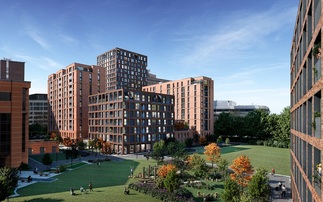Mark Callender of Schroders looks back at the IPD Annual Index to better understand the current state of the UK property market
After the longest recession since the 1930s, the UK economy appears to be on the verge of recovery. This prospect has already triggered a strong rebound in the UK stock market and it raises the question of whether now is the right time to consider investing in the UK property market.
One way of tackling the issue is to use the IPD Annual Index since 1970 to examine how UK property has performed at similar turning points in the past. The chart breaks the historical record into 34 different five-year rolling periods and shows total returns in real terms, to remove any distortions caused by variations in inflation. The 34 five-year rolling periods have been divided into roughly three equal groups, according to the size of the output gap at the start of the investment period. In economic theory the output gap is the estimated difference between total demand in the economy (GDP) and its productive potential, given the size and flexibility of the labour force, the stock of capital equipment and IT, education, etc. In practical terms it is a measure of the amount of spare capacity in the economy, including both people who are unemployed and plant and equipment which are idle. At the end of a recession and for the first few years of recovery, there is typically a lot of spare capacity in the economy and the output gap is below -1.
Conversely, towards the end of an upswing in the economy and at the start of a recession, the economy is usually operating close to full capacity and the output gap is above 1. Although not infallible, the results do suggest that investing in property when the UK economy is emerging from recession and the output gap is below -1 has been a successful strategy. In the past this would have resulted in above average real returns on eight out of 12 occasions. The key advantage has been a relatively high rate of income return. In addition, investors who entered the market in 1975 and 1991-1993 gained from a subsequent fall in property yields, as the recession ended and prospects for rental growth improved. While property yields did not fall after the early 1980s recession, this was primarily because the abolition of exchange controls in 1979 led to a major shift by UK institutions into foreign equities. However, investors who took the plunge in 1982-1985 did benefit from a subsequent upswing in rental values between 1986-1989.
As might be expected, investing when the economy is growing steadily and broadly in equilibrium with an output gap between -1 and 1 has also generally been a reasonable strategy and would have resulted in above average real returns on 10 out of 15 occasions.
By contrast, investing when the economy is operating at full tilt and the output gap is above 1 has rarely proved to be successful. Looking at the nine investment periods when the output gap was above 1 at the start, there was only one period (end-1977 to end-1982) when real returns over the next five years exceeded the long term average of 4.2% per year. The underlying rationale appears to be that if the economy is running at full capacity then either inflation will take off and interest rates will have to be raised, or there is a financial bubble which, sooner or later, will burst. While we do not yet have complete data for the five year periods from end-2004 onwards, the output gap would have indicated in the second quarter of 2006 that investors should have stopped adding to their property portfolios and considered selling.
[asset_library_tag 478,Download charts]






